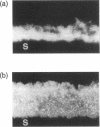Abstract
Bacterial infections associated with indwelling medical devices often demonstrate an intrinsic resistance to antimicrobial therapies. In order to explore the possibility of transport limitation to biofilm bacteria as a contributing factor, the penetration of a fluoroquinolone antibiotic, ciprofloxacin, through Pseudomonas aeruginosa biofilms was investigated. Attenuated total reflection Fourier transform infrared (ATR/FT-IR) spectrometry was employed to monitor bacterial colonization of a germanium substratum, transport of ciprofloxacin to the biofilm-substratum interface, and interaction of biofilm components with the antibiotic in a flowing system. Transport of the antibiotic to the biofilm-substratum interface during the 21-min exposure to 100 micrograms/ml was found to be significantly impeded by the biofilm. Significant changes in IR bands of the biofilm in regions of the spectrum associated with RNA and DNA vibrational modes appeared following exposure to the antibiotic, indicating chemical modification of biofilm components. These results suggest that transport limitations may be an important factor in the antimicrobial resistance of biofilm bacteria and that ATR/FT-IR spectrometry may be used to follow the time course of antimicrobial action in biofilms in situ.
Full text
PDF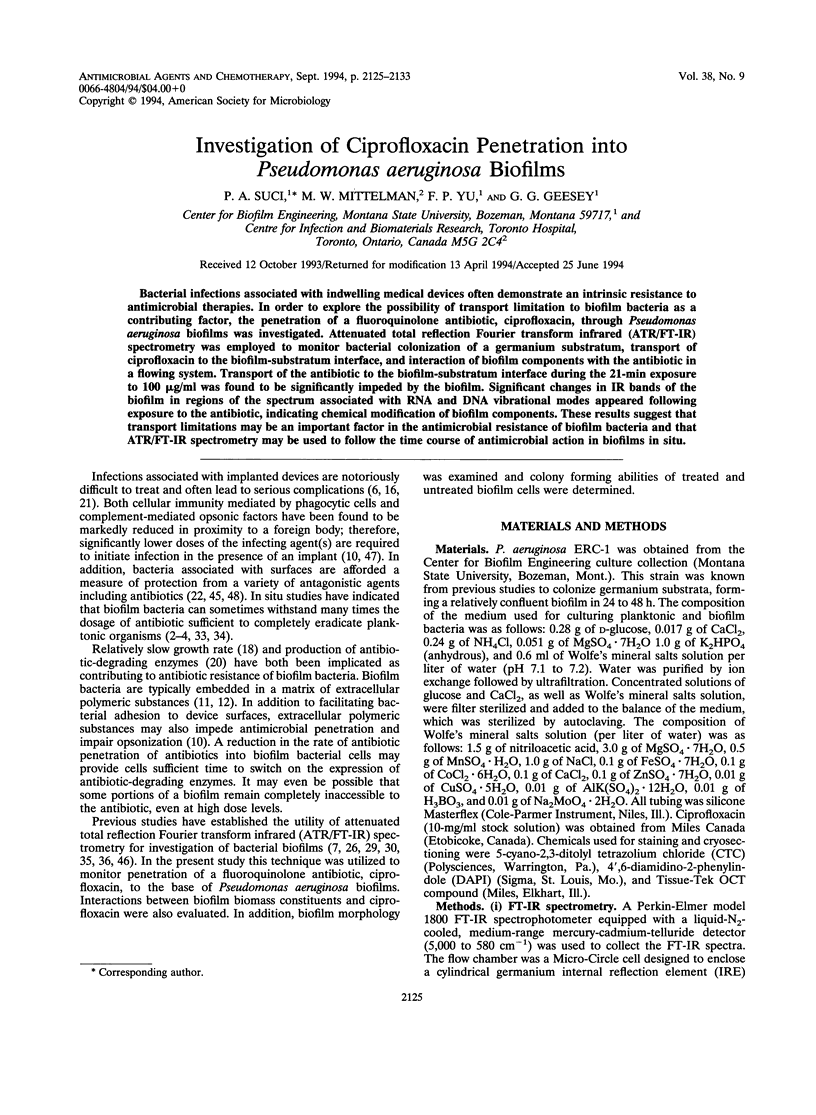
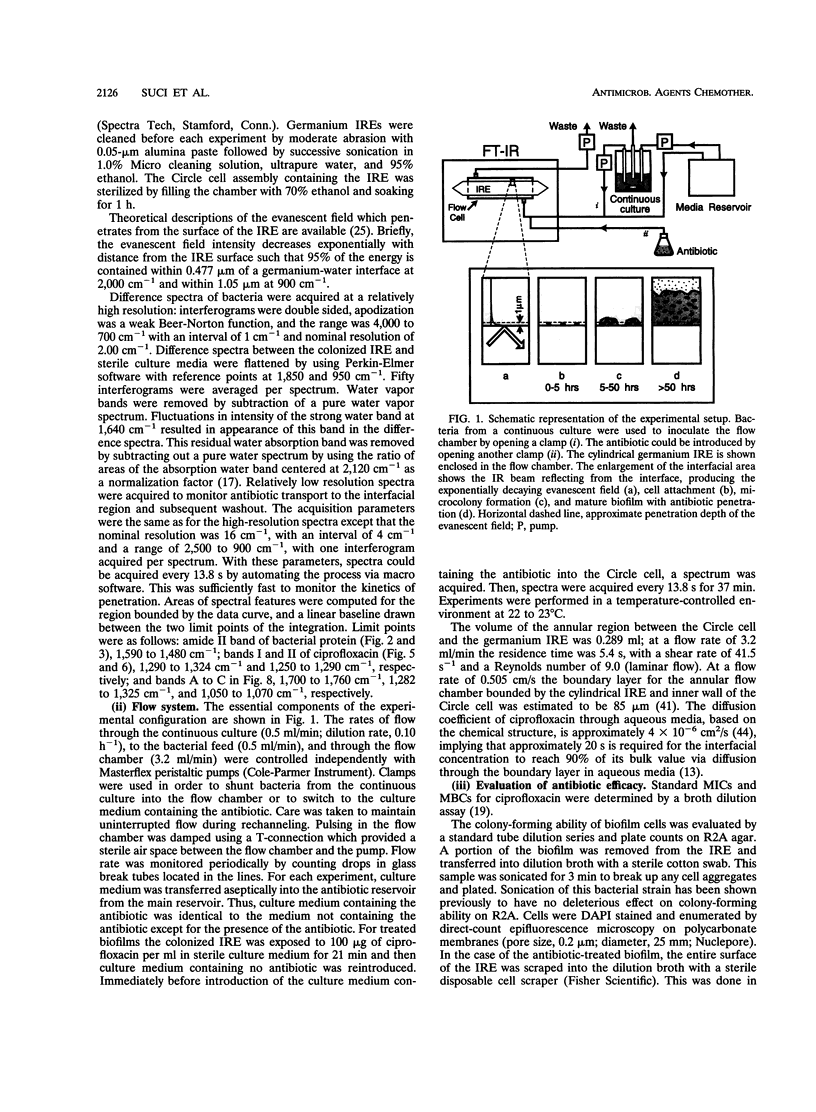
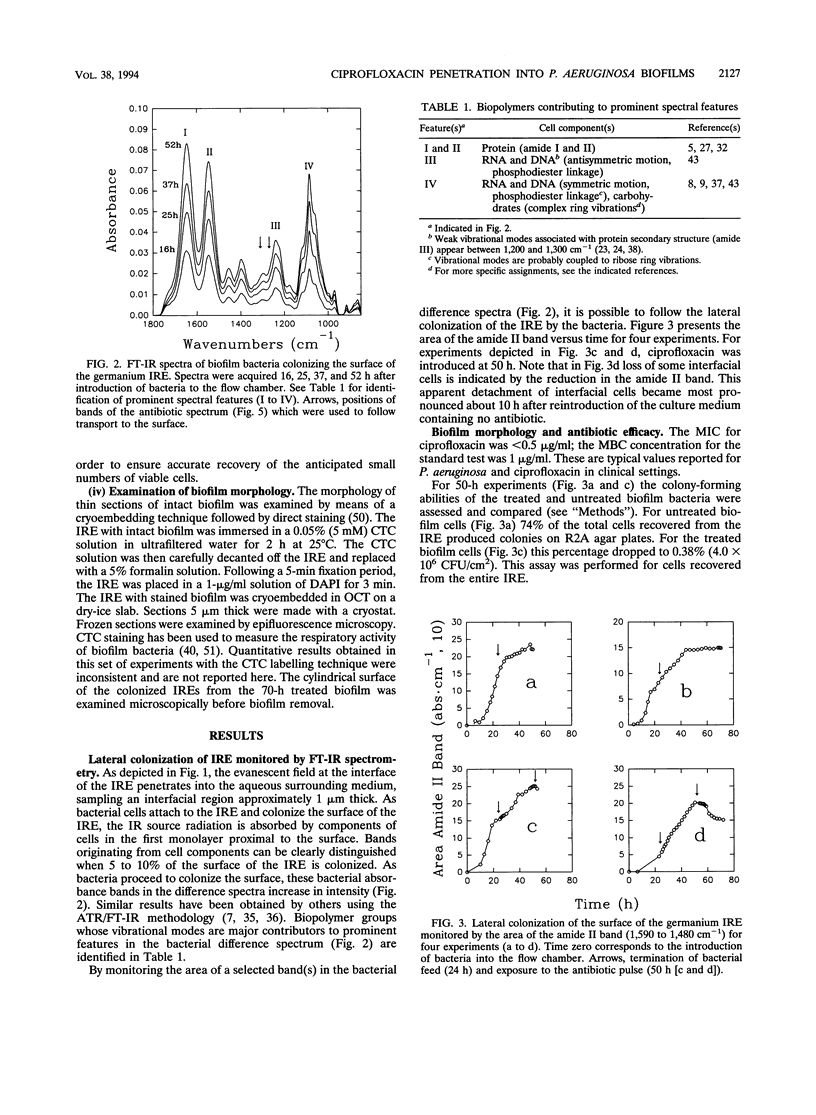
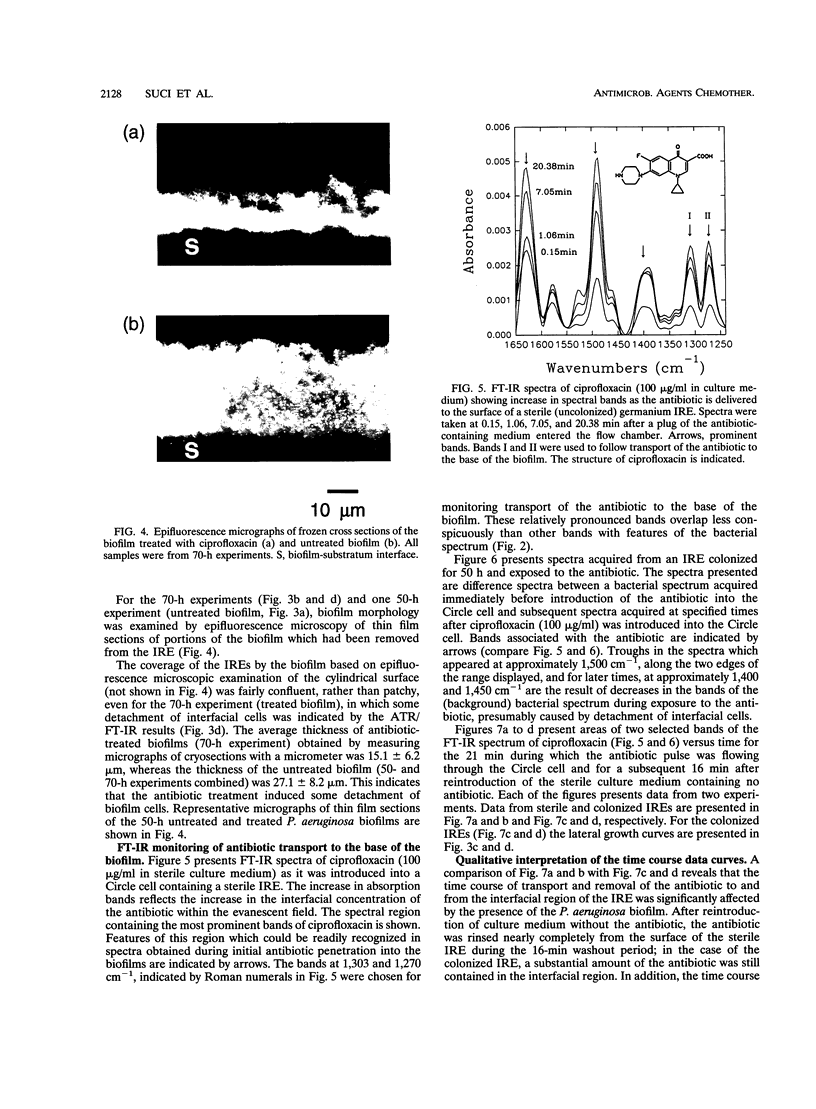
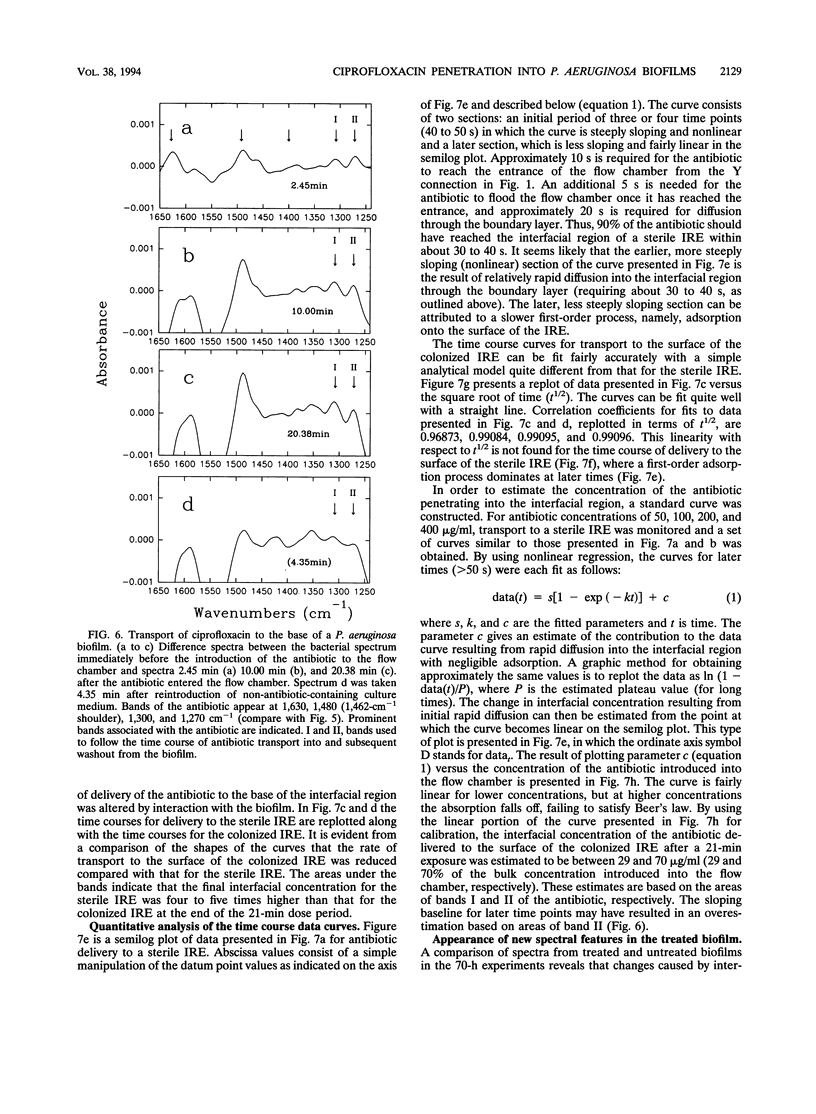
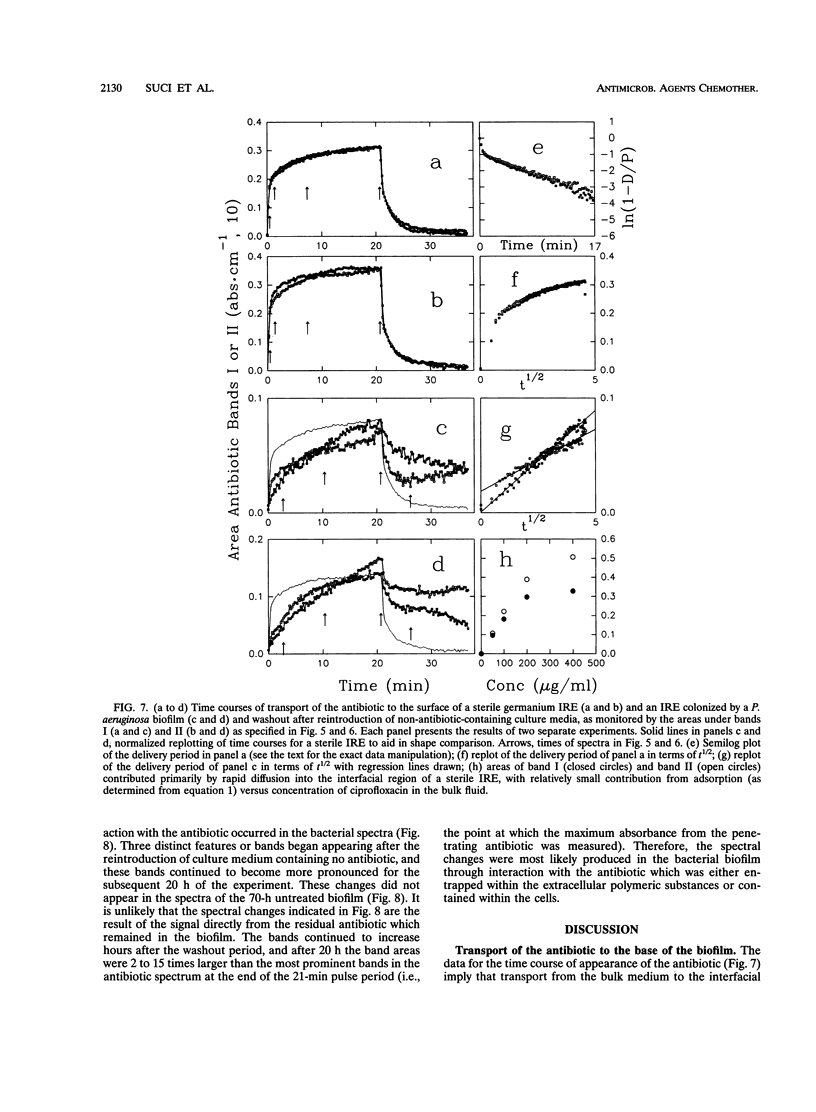
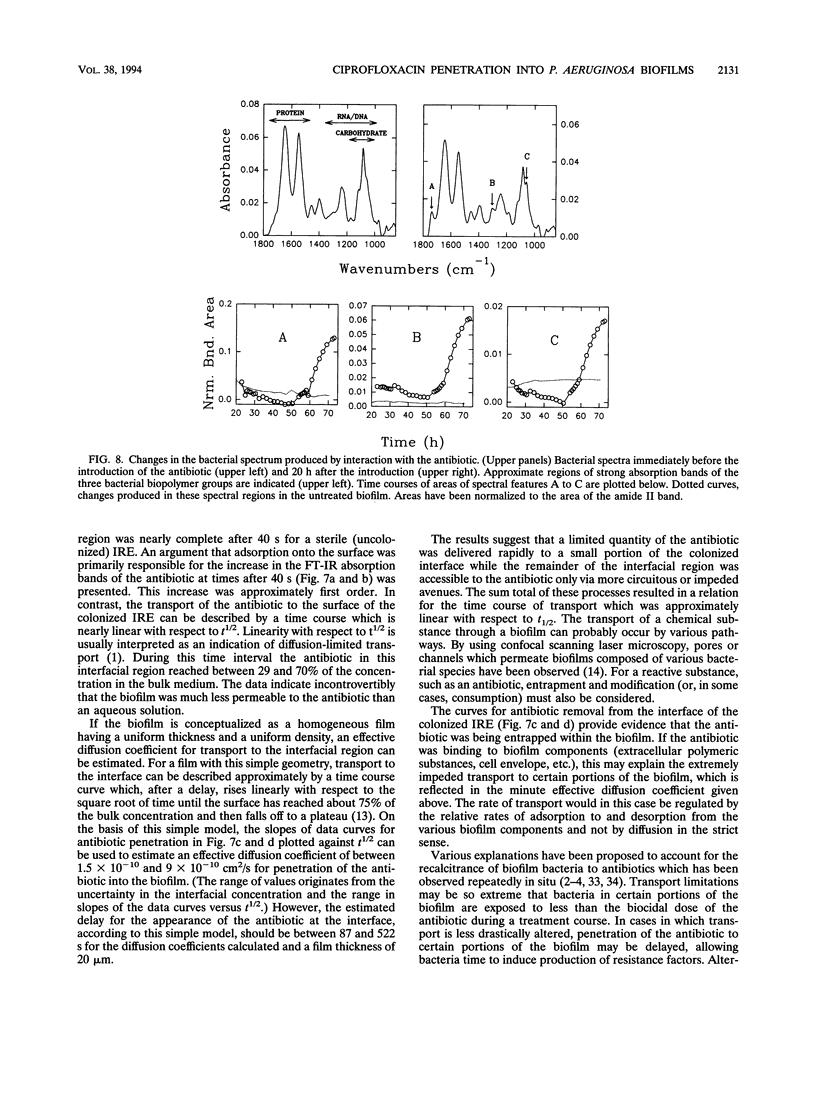
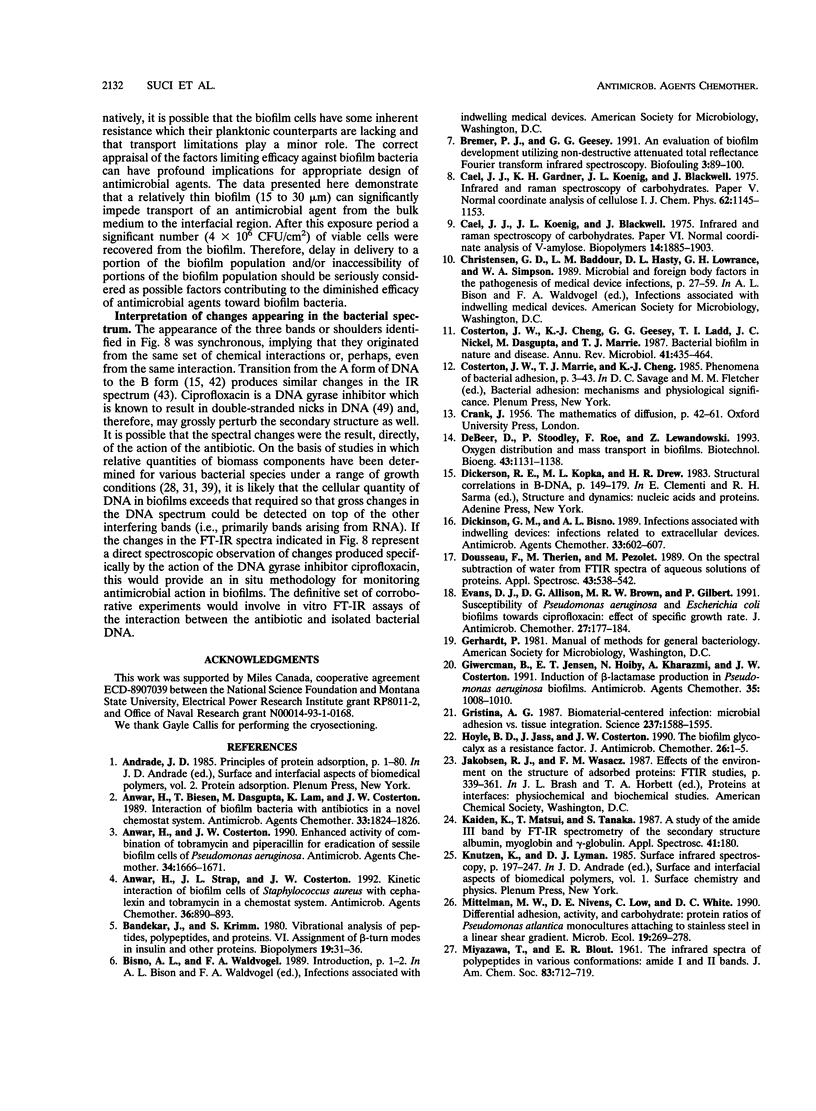
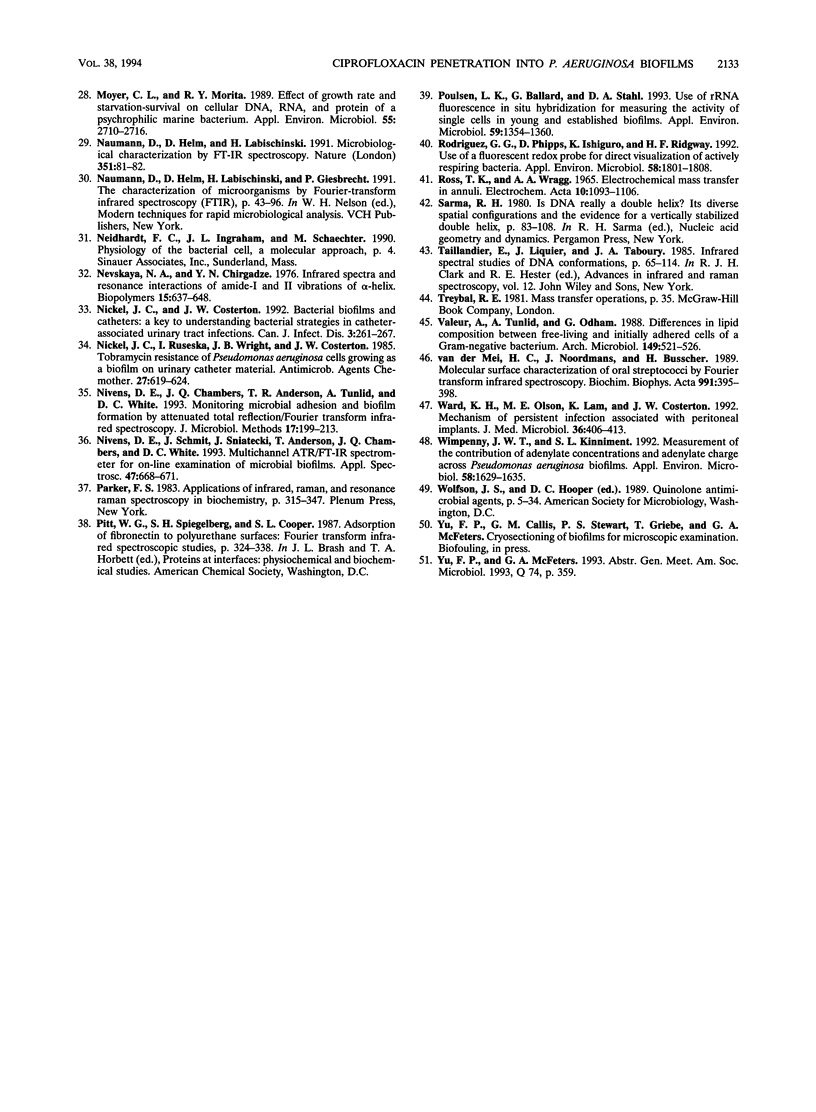
Images in this article
Selected References
These references are in PubMed. This may not be the complete list of references from this article.
- Anwar H., Costerton J. W. Enhanced activity of combination of tobramycin and piperacillin for eradication of sessile biofilm cells of Pseudomonas aeruginosa. Antimicrob Agents Chemother. 1990 Sep;34(9):1666–1671. doi: 10.1128/aac.34.9.1666. [DOI] [PMC free article] [PubMed] [Google Scholar]
- Anwar H., Strap J. L., Costerton J. W. Kinetic interaction of biofilm cells of Staphylococcus aureus with cephalexin and tobramycin in a chemostat system. Antimicrob Agents Chemother. 1992 Apr;36(4):890–893. doi: 10.1128/aac.36.4.890. [DOI] [PMC free article] [PubMed] [Google Scholar]
- Anwar H., van Biesen T., Dasgupta M., Lam K., Costerton J. W. Interaction of biofilm bacteria with antibiotics in a novel in vitro chemostat system. Antimicrob Agents Chemother. 1989 Oct;33(10):1824–1826. doi: 10.1128/aac.33.10.1824. [DOI] [PMC free article] [PubMed] [Google Scholar]
- Bandekar J., Krimm S. Vibrational analysis of peptides, polypeptides, and proteins. VI. Assignment of beta-turn modes in insulin and other proteins. Biopolymers. 1980 Jan;19(1):31–36. doi: 10.1002/bip.1980.360190103. [DOI] [PubMed] [Google Scholar]
- Costerton J. W., Cheng K. J., Geesey G. G., Ladd T. I., Nickel J. C., Dasgupta M., Marrie T. J. Bacterial biofilms in nature and disease. Annu Rev Microbiol. 1987;41:435–464. doi: 10.1146/annurev.mi.41.100187.002251. [DOI] [PubMed] [Google Scholar]
- Dickinson G. M., Bisno A. L. Infections associated with indwelling devices: infections related to extravascular devices. Antimicrob Agents Chemother. 1989 May;33(5):602–607. doi: 10.1128/aac.33.5.602. [DOI] [PMC free article] [PubMed] [Google Scholar]
- Evans D. J., Allison D. G., Brown M. R., Gilbert P. Susceptibility of Pseudomonas aeruginosa and Escherichia coli biofilms towards ciprofloxacin: effect of specific growth rate. J Antimicrob Chemother. 1991 Feb;27(2):177–184. doi: 10.1093/jac/27.2.177. [DOI] [PubMed] [Google Scholar]
- Giwercman B., Jensen E. T., Høiby N., Kharazmi A., Costerton J. W. Induction of beta-lactamase production in Pseudomonas aeruginosa biofilm. Antimicrob Agents Chemother. 1991 May;35(5):1008–1010. doi: 10.1128/aac.35.5.1008. [DOI] [PMC free article] [PubMed] [Google Scholar]
- Gristina A. G. Biomaterial-centered infection: microbial adhesion versus tissue integration. Science. 1987 Sep 25;237(4822):1588–1595. doi: 10.1126/science.3629258. [DOI] [PubMed] [Google Scholar]
- Hoyle B. D., Jass J., Costerton J. W. The biofilm glycocalyx as a resistance factor. J Antimicrob Chemother. 1990 Jul;26(1):1–5. doi: 10.1093/jac/26.1.1. [DOI] [PubMed] [Google Scholar]
- Kinniment S. L., Wimpenny J. W. Measurements of the distribution of adenylate concentrations and adenylate energy charge across Pseudomonas aeruginosa biofilms. Appl Environ Microbiol. 1992 May;58(5):1629–1635. doi: 10.1128/aem.58.5.1629-1635.1992. [DOI] [PMC free article] [PubMed] [Google Scholar]
- Moyer C. L., Morita R. Y. Effect of growth rate and starvation-survival on cellular DNA, RNA, and protein of a psychrophilic marine bacterium. Appl Environ Microbiol. 1989 Oct;55(10):2710–2716. doi: 10.1128/aem.55.10.2710-2716.1989. [DOI] [PMC free article] [PubMed] [Google Scholar]
- Naumann D., Helm D., Labischinski H. Microbiological characterizations by FT-IR spectroscopy. Nature. 1991 May 2;351(6321):81–82. doi: 10.1038/351081a0. [DOI] [PubMed] [Google Scholar]
- Nevskaya N. A., Chirgadze Y. N. Infrared spectra and resonance interactions of amide-I and II vibration of alpha-helix. Biopolymers. 1976 Apr;15(4):637–648. doi: 10.1002/bip.1976.360150404. [DOI] [PubMed] [Google Scholar]
- Nickel J. C., Ruseska I., Wright J. B., Costerton J. W. Tobramycin resistance of Pseudomonas aeruginosa cells growing as a biofilm on urinary catheter material. Antimicrob Agents Chemother. 1985 Apr;27(4):619–624. doi: 10.1128/aac.27.4.619. [DOI] [PMC free article] [PubMed] [Google Scholar]
- Poulsen L. K., Ballard G., Stahl D. A. Use of rRNA fluorescence in situ hybridization for measuring the activity of single cells in young and established biofilms. Appl Environ Microbiol. 1993 May;59(5):1354–1360. doi: 10.1128/aem.59.5.1354-1360.1993. [DOI] [PMC free article] [PubMed] [Google Scholar]
- Rodriguez G. G., Phipps D., Ishiguro K., Ridgway H. F. Use of a fluorescent redox probe for direct visualization of actively respiring bacteria. Appl Environ Microbiol. 1992 Jun;58(6):1801–1808. doi: 10.1128/aem.58.6.1801-1808.1992. [DOI] [PMC free article] [PubMed] [Google Scholar]
- Ward K. H., Olson M. E., Lam K., Costerton J. W. Mechanism of persistent infection associated with peritoneal implants. J Med Microbiol. 1992 Jun;36(6):406–413. doi: 10.1099/00222615-36-6-406. [DOI] [PubMed] [Google Scholar]
- van der Mei H. C., Noordmans J., Busscher H. J. Molecular surface characterization of oral streptococci by Fourier transform infrared spectroscopy. Biochim Biophys Acta. 1989 Jun 27;991(3):395–398. doi: 10.1016/0304-4165(89)90063-9. [DOI] [PubMed] [Google Scholar]



